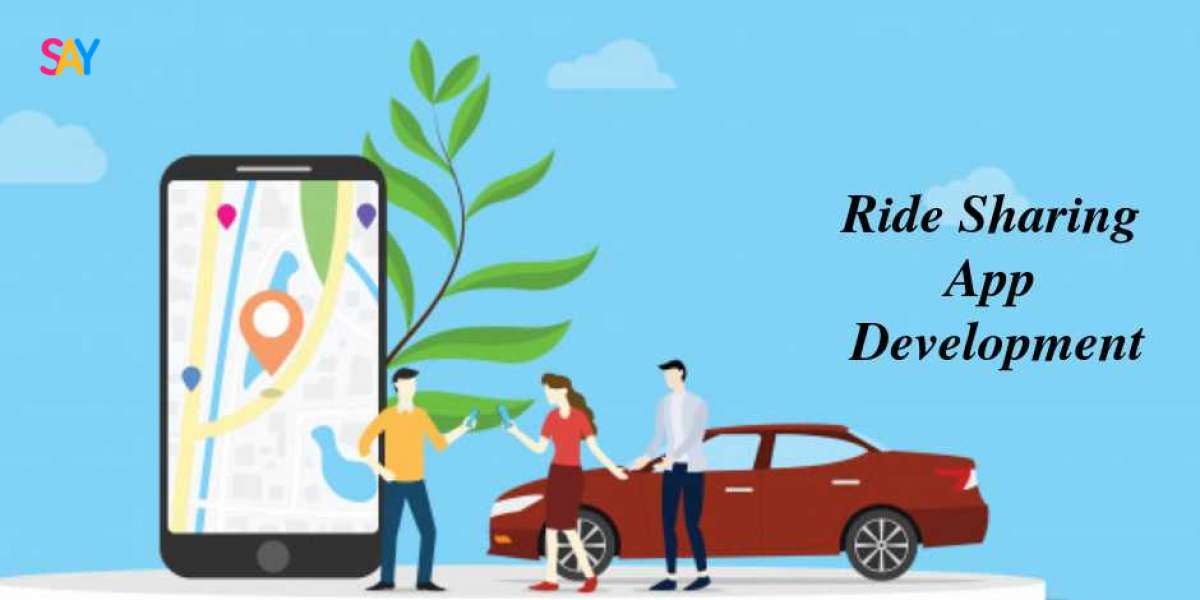Introduction
In recent years, the transportation industry has witnessed a paradigm shift with the advent of ridesharing apps. These platforms have not only transformed the way people commute but have also created lucrative opportunities for entrepreneurs in the tech sector. Among the pioneers of this revolution is Uber, which has set the benchmark for ridesharing services worldwide. However, with the increasing demand for innovative solutions, many aspiring business owners are looking to develop their own ridesharing apps. In this comprehensive guide, we'll delve into the intricacies of ridesharing app development, exploring key features, technologies, and strategies for success.
Understanding the Ridesharing Landscape:
Before diving into the development process, it's crucial to gain a thorough understanding of the ridesharing landscape. Ridesharing, also known as carpooling or car-sharing, involves connecting passengers with drivers through a digital platform. These platforms facilitate on-demand transportation services, allowing users to request rides, track drivers in real-time, and make secure payments.
Key Features of Ridesharing Apps:
To ensure the success of your ridesharing app, it's essential to incorporate a comprehensive set of features that cater to the needs of both passengers and drivers. Some of the key features include:
User Registration and Profiles: Seamless registration process with social media integration and profile management capabilities.
Ride Booking: Intuitive interface for users to request rides, specify pick-up and drop-off locations, and choose vehicle types.
Real-time Tracking: GPS-enabled tracking functionality to allow users to track the location of their assigned driver.
In-app Communication: Built-in messaging system for communication between passengers and drivers regarding ride details.
Payment Integration: Secure payment gateways to facilitate cashless transactions, including credit/debit cards, digital wallets, and in-app wallets.
Ratings and Reviews: Two-way rating system for passengers and drivers to provide feedback and maintain service quality.
Driver Management: Features for driver onboarding, document verification, earnings tracking, and performance monitoring.
Choosing the Right Technology Stack:
Selecting the appropriate technology stack is crucial for building a robust and scalable ridesharing app. Here are some key technologies commonly used in ridesharing app development:
Mobile Platforms: Android and iOS for building native mobile apps with superior performance and user experience.
Backend Development: Node.js, Python, or Java for backend development, along with frameworks like Express.js or Django.
Database Management: MySQL, PostgreSQL, or MongoDB for managing user data, ride details, and driver information.
Real-time Communication: WebSocket or WebRTC for implementing real-time communication features such as live tracking and messaging.
Geolocation Services: Google Maps API, Mapbox, or Here Maps for integrating mapping and navigation functionalities.
Designing the User Interface:
A user-friendly and visually appealing interface is essential for engaging users and enhancing the overall experience of your ridesharing app. When designing the UI/UX, consider the following principles:
Simplicity: Keep the interface clean and intuitive, with easy navigation and minimalistic design elements.
Branding: Incorporate your brand colors, logo, and visual identity to establish brand recognition and foster trust among users.
Accessibility: Ensure that the app is accessible to users with disabilities by adhering to accessibility guidelines and standards.
Personalization: Provide personalized recommendations, notifications, and settings based on user preferences and behavior.
Data Encryption: Encrypt sensitive data such as user credentials, payment information, and location data to prevent unauthorized access.
Two-factor Authentication: Implement two-factor authentication for user accounts to add an extra layer of security against unauthorized logins.
Secure Payment Gateways: Integrate trusted payment gateways with robust encryption protocols to ensure secure transactions.
Regular Security Audits: Conduct regular security audits and penetration testing to identify and mitigate potential vulnerabilities.
Monetization Strategies:
Monetizing your ridesharing app is essential for generating revenue and sustaining your business operations.
Here are some common monetization strategies employed by ridesharing apps:
Commission Fees: Charge a commission fee on each ride transaction processed through your platform.
Surge Pricing: Implement dynamic pricing algorithms to adjust fares based on demand and supply, especially during peak hours or high-demand periods.
Subscription Plans: Offer subscription plans with premium features, such as priority booking, discounted fares, or ad-free experiences.
Advertising: Partner with local businesses or advertisers to display targeted ads within the app, generating additional revenue streams.
Compliance and Regulations:
Navigating regulatory requirements and compliance standards is crucial in the ridesharing industry, as it involves providing transportation services to the public. Before launching your app, ensure compliance with local regulations, licensing requirements, insurance policies, and data protection laws.
Testing and Quality Assurance:
Thorough testing and quality assurance are essential to ensure the reliability, performance, and functionality of your ridesharing app. Conduct rigorous testing across various devices, platforms, and network conditions to identify and address any bugs or issues before the app goes live.
Launch and Marketing:
Once your ridesharing app is ready for launch, devise a comprehensive marketing strategy to promote your app and attract users. Leverage digital marketing channels, social media platforms, influencer partnerships, and referral programs to reach your target audience and drive app downloads.
Continuous Improvement and Innovation:
The ridesharing industry is constantly evolving, driven by technological advancements, changing consumer preferences, and market dynamics. Stay ahead of the curve by continuously monitoring industry trends, gathering user feedback, and implementing new features and innovations to enhance your app's competitiveness and relevance.
Conclusion
In conclusion, ridesharing app development offers immense opportunities for entrepreneurs to disrupt the transportation industry and create innovative solutions that cater to the evolving needs of modern commuters. By focusing on user-centric design, cutting-edge technologies, robust security measures, and effective monetization strategies, you can build a successful ridesharing app that revolutionizes the way people move around cities.




